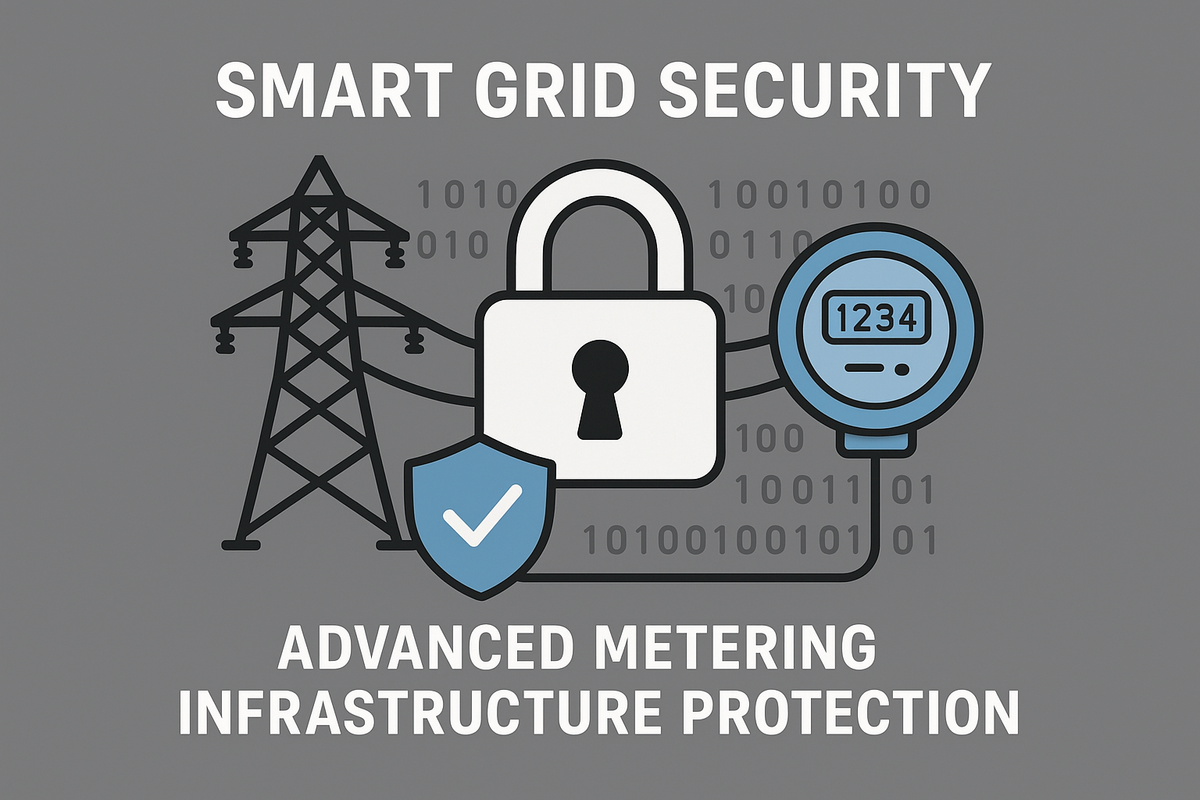Smart Grid Security: Advanced Metering Infrastructure Protection

Introduction: Smart Grid Transformation and AMI Security Priority
Smart grids and Advanced Metering Infrastructure (AMI) redefine power management, data intelligence, and customer engagement, but their scale and digital maturity create new avenues for attack and disruption. Utilities, regulators, and technology partners must prioritize security to prevent outages, fraud, and loss of trust in an era of hyper-connected grids.
Threat Landscape: Emerging Risks in AMI Deployments
- Attacks on AMI target smart meters, head-end servers, distribution automation, and cloud services, using ransomware, malware injection, phishing, and physical sabotage.
- IoT-enabled smart metering increases exposure, with risks of remote manipulation, large-scale data exfiltration, and denial-of-service brought by software supply chain vulnerabilities.
- Recent ransomware and botnet incidents highlight attackers leveraging default credentials, weak encryption, and unpatched firmware in metering networks.
- Cross-border cyber espionage and insider threats—especially in environments with inadequate access controls—amplify risk to national infrastructure.
Critical Vulnerabilities in Advanced Metering Infrastructure
- Flat network architectures, poorly segmented AMI-to-SCADA integrations, and unencrypted communication between smart meters and head-end systems invite attack and manipulation.
- Key management gaps, missing role-based access, and lack of regular credential refresh open the door to replay, privilege escalation, and persistent infiltration.
- Resource-constrained smart meters require lightweight cryptographic methods for real-time authentication and secure updates—failure to address these leads to platform instability and risk.
- Supply chain vulnerabilities—compromised hardware, firmware, and cloud components—increase exposure, demanding audit and assurance throughout procurement.
Market Dynamics and Regulatory Landscape
- The global AMI market will reach $45.48 billion by 2030, with significant growth in modular hardware upgrades, open APIs, and cloud analytics adoption.
- Regulatory frameworks (CEA Cybersecurity Guidelines, IEGC 2023, sectoral CERTs) emphasize mandatory audits, threat intelligence sharing, and encryption standards for AMI deployments.
- India's rapid rollout under RDSS and the Smart Meter National Program highlights both technical progress and project management obstacles—supply chain delays, statewise tender variation, and operational complexity.
Major Case Studies and Recent Incidents
- High-profile smart meter breaches in North America, the EU, and Asia involved both digital and physical compromise, causing leaks of consumer usage data, electricity theft, and service interruptions.
- European utilities used public-key infrastructure and AI-driven analytics for rapid detection and recovery from coordinated meter-based incidents, demonstrating robust incident response.
- India’s coordinated cybersecurity forum (CSIRT-Power, ISAC-Power) enabled real-time threat intelligence and incident resolution for large smart grid deployments.
Best Practices for Smart Grid and AMI Protection
- Multilayered Network Security: Segment AMI environments from SCADA, deploy intrusion detection systems (IDS/IPS), VPNs, and hardware security modules.
- Strong Authentication and Encryption: Public-key infrastructure, lightweight cryptographic protocols, and adaptive credential policies for both meters and head-end systems.
- Continuous Monitoring and Automated Response: AI-driven threat analytics, automated software patching, and real-time anomaly reporting through SIEM platforms.
- Secure Firmware and Supply Chain: Validate firmware updates, use only signed software, and enforce vendor cybersecurity standards and audits.
- Incident Response and Recovery: Structured IR plans, backup management, forensic processes, and standardized communication protocols for post-incident review.
- Stakeholder Collaboration and Awareness: Continuous skill development, cross-utility information sharing, and coordinated regulatory-supplier engagement to reinforce security culture.
Future-Proofing: AI, Blockchain, and Quantum-Resistant Controls
- Adoption of AI-driven threat detection, blockchain-based data integrity solutions, and quantum-resistant cryptography will define next-generation AMI resilience.
- Standardization of communication and data protocols, open-source APIs, and interoperability initiatives enable rapid adaptation to new threats and business models.
- International collaboration, scalable training, and dynamic regulation are essential to anticipate and mitigate future risks in an expanding AMI ecosystem.
Conclusion: Securing Smart Grid Foundations
The journey to resilient smart grids and secure Advanced Metering Infrastructure depends on adaptive technical controls, robust market frameworks, proactive incident management, and a skilled workforce. Expanding digital power networks demands constant vigilance, innovation, and cross-sector engagement to protect the backbone of modern society.
Take the Next Step with CodeSecure Solutions
Cyber threats are growing more sophisticated every day. With a trusted partner by your side, you can safeguard your business while focusing on what truly matters—growth and innovation.
At CodeSecure Solutions, we deliver comprehensive cybersecurity services in Chennai, uniquely tailored for startups, SMEs, and enterprises:
- Vulnerability Assessment & Penetration Testing (VAPT)
- Network Security Solutions
- Compliance Support (ISO 27001, PCI-DSS, HIPAA, DPDP Act, GDPR)
- Cloud & Endpoint Protection
- Security Awareness Training
No matter your industry or size, CodeSecure customizes solutions to fit your needs—ensuring your data, reputation, and operations remain secure.
Ready to Strengthen Your Defenses?
- 📞 Call: +91 73584 63582
- ✉️ Email: [email protected]
- 🌐 Visit: www.codesecure.in
Stay secure. Stay informed. Choose CodeSecure Solutions—your partner in cyber resilience
